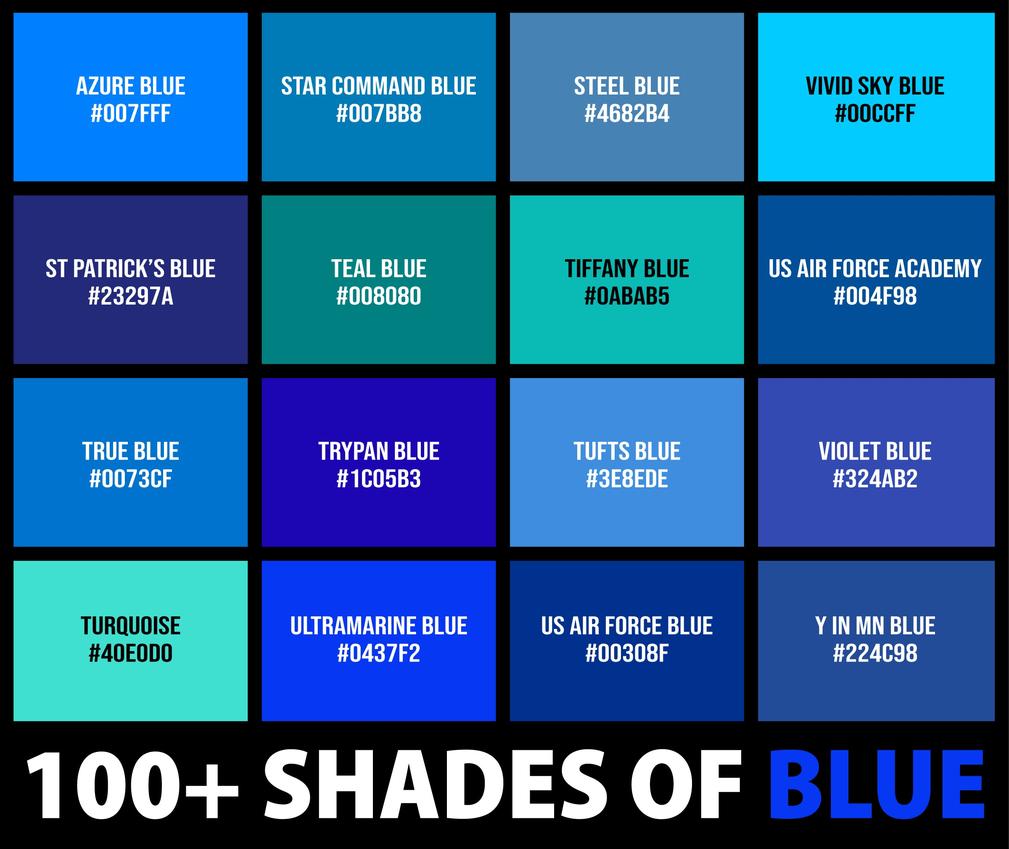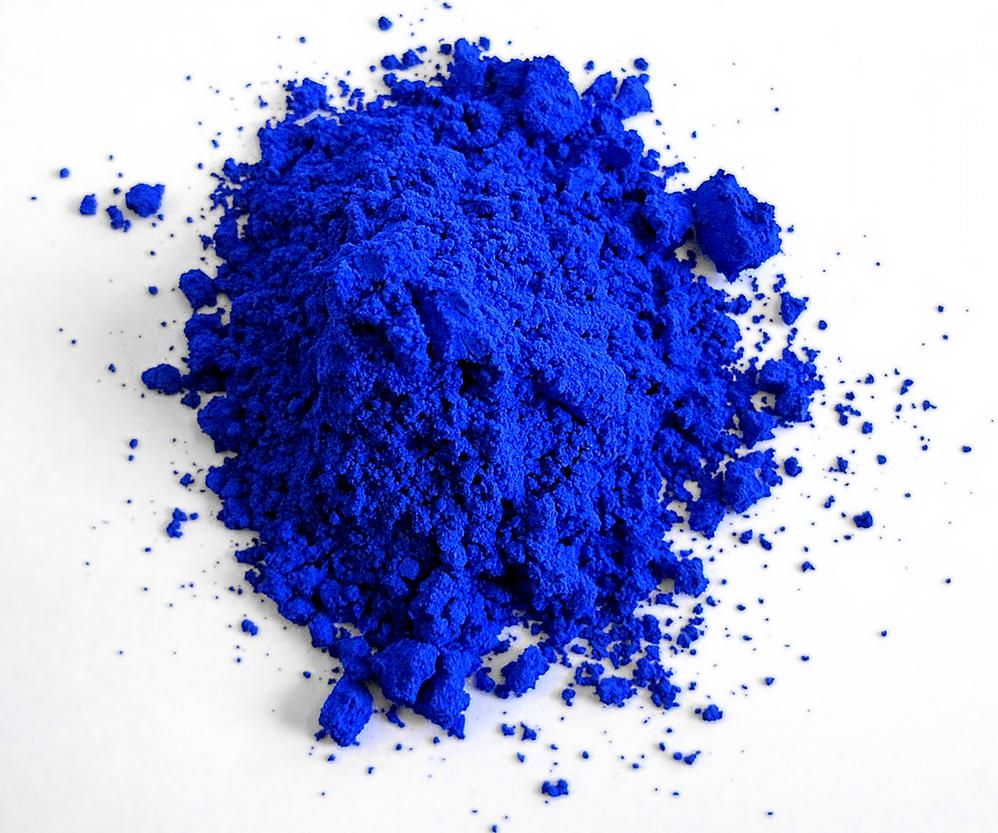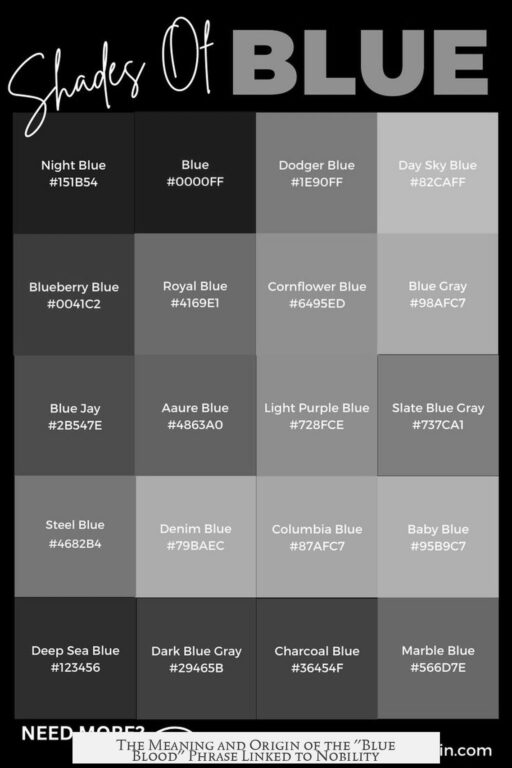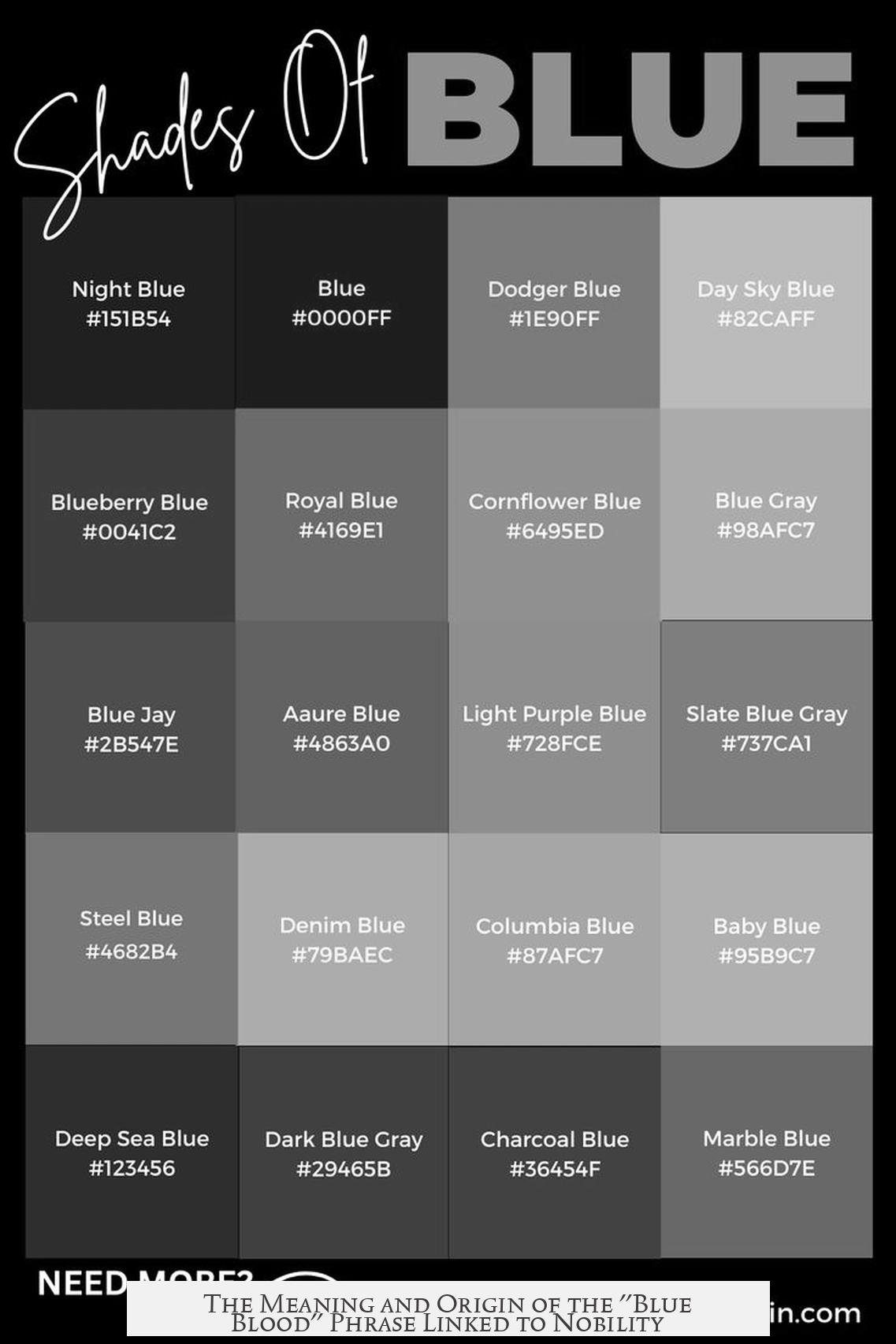The phrase “blue blood” used about nobles originates from Spain and refers to the visible blue veins seen beneath the pale skin of aristocrats, particularly those of Visigoth descent. This contrasts with the darker skin tones of Muslims and Jews in medieval Spain. Pale skin made veins more visible, and veins appear blue, hence the term “blue blood.” It initially denoted pure Spanish lineage linked to the Visigoth nobility.

The meaning started in Spanish culture, where those claiming “pure” Spanish heritage—unmixed with Jewish or Muslim ancestry—often had very pale skin. Visigoth nobles, who typically stayed indoors more and avoided outdoor labor, became even paler, highlighting this physical trait. Their visible veins, a result of their skin tone, gave rise to the term.
The Oxford English Dictionary dates the phrase “blue blood” relatively late, to 1811. Early documented use includes a reference in The Annual Register, which described the nobility of Valencia as divided into three blood classes: blue, red, and yellow. Blue blood was reserved for grandees, the highest-ranked noble families.

This division into blue, red, and yellow blood categories reveals a subtle social stratification within the noble class. While blue bloods were the purest nobles, the meaning and origins of “red blood” and “yellow blood” are less clear and subject to speculation. The mention of “yellow blood” hints at social stigma or undesirable heritage, though precise definitions remain uncertain.
In modern times, “blue blood” broadly symbolizes aristocracy or noble birth across various cultures, but its roots remain in Spanish history. It refers to hereditary upper-class status associated with specific ancestry and bloodlines, emphasizing pedigree rather than wealth alone.

- “Blue blood” refers to visible blue veins under pale skin linked to pure Visigoth noble lineage in Spain.
- The phrase dates from at least the early 19th century in English usage but is older in Spanish tradition.
- The nobility of Valencia recognized “blue blood” as the highest class of noble families, distinct from “red” and “yellow” blood.
- The term now universally signifies aristocratic or noble heritage, particularly inherited status.
What Is the Meaning and Origin of the “Blue Blood” Phrase Used About Nobles?
The phrase “blue blood” essentially means noble or aristocratic lineage, often implying a family of pure or prestigious descent. It evokes images of regal superiority, elite heritage, and a social class that stands apart from the common folk. But where does this phrase come from? Why blue blood? Let’s unravel this curious expression.

The story behind “blue blood” is quite fascinating and has roots steeped in history and social stratification. It’s originally a Spanish phrase, “sangre azul,” which literally translates to “blue blood.” This expression emerged as a way for the Spanish aristocracy to distinguish themselves from others within their society, particularly from Muslims and Jews, during times when cultural and religious purity was a significant social marker.
A Pale Face and Visible Veins: The Birth of Blue Blood

You might wonder: why blue? Here’s the practical bit — those who claimed to be “pure Spaniards” or of Visigoth descent were noticeably paler in complexion. This paleness wasn’t trivial. It was tied to their social status and even their occupation. The Visigoth nobles, who did not work outdoors under the sun, maintained a complexion so pale that their veins stood out prominently — and guess what color veins look beneath pale skin? Yes, blue.
This visible network of blue veins symbolized the “blue blood.” It was a way for nobles to flaunt a lack of manual labor—thus proving their superiority. Mixing cultural pride with anatomy, voilà: blue blood!
But What about Other Colors? Red and Yellow Bloods in Valencia
The idea of “blue blood” isn’t just a lone phrase. Fascinatingly, the nobility of Valencia, Spain, used a more colorful system to indicate lineage and class status. According to an 1811 entry in The Annual Register, nobles there were divided into three classes: blue blood, red blood, and yellow blood.
| Blood Color | Meaning | Notes |
|---|---|---|
| Blue Blood | Families made grandees (top nobles) | Pure, prestigious aristocracy |
| Red Blood | Likely noble but of a different or less “pure” lineage | Middle nobility or less prestigious |
| Yellow Blood | Unknown exact meaning | Speculated to be an unfavorable or lower class |
The curious “yellow blood” category remains a mystery, with some guessing it involved “unpleasant” or socially stigmatized groups. It certainly makes you wonder what societal relations and classifications looked like back then.
The Phrase’s Timeline and Modern Usage
Despite the phrase having roots centuries old, the Oxford English Dictionary (OED) marks “blue blood” as a relatively modern addition to English, first appearing around 1811. This shows how terms can migrate from one culture to another, taking on new life and meaning abroad.
Today, “blue blood” is often used broadly to refer to aristocrats or noble families worldwide—not just Spaniards. It has ingrained itself in English-speaking cultures, romanticized as a description of refined heritage and old wealth.
Why Does This Matter? The Power of a Phrase
Understanding the origin of “blue blood” gives us insight into how social status was, and sometimes still is, conveyed visually and linguistically. This phrase reflects societal values tied to ancestry, occupation, and racial or religious purity. More importantly, it reveals how appearance was leveraged as a status symbol.
Imagine you’re a Visigoth noble skipping the sunlit labor outside to keep your skin pale and veins visible. With your skin revealing these “blue veins,” you’re silently broadcasting your elevated status. That’s social signaling at its finest.
Practical Takeaways: What Can We Learn?
- Language evolves but roots matter: Phrases like “blue blood” teach us about historical social structures and prejudice.
- Color as a social code: Skin and vein color once carried overt social meaning, even influencing identity labels.
- Not all nobles are created equal: Other blood classifications remind us that aristocracy had layers — not a single, homogenous group.
- Question the unknown: “Yellow blood” hints there’s always more to the story — explore these historical mysteries!
So, next time you hear someone described as having “blue blood,” remember—it isn’t just about fancy lineage. It’s a phrase packed with centuries-old social politics, cultural pride, and even anatomy lessons. Blue blood isn’t just a metaphor; it’s a vivid window into history.
Isn’t it amusing how visible veins once mattered more than the fancy jewels nobles wore? History holds plenty of quirks like that, each with a twist waiting to surprise you.




